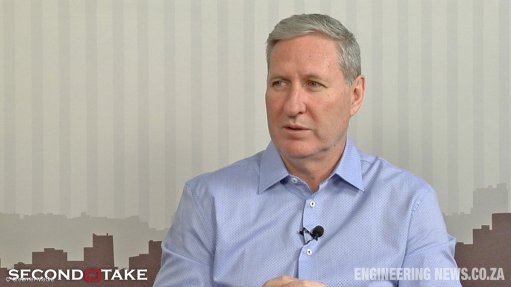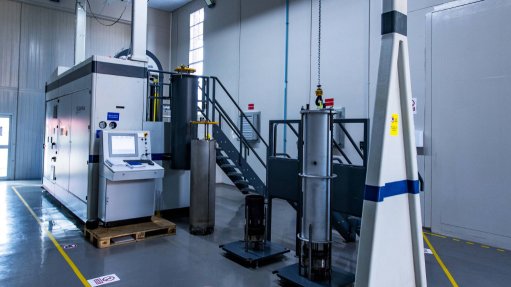Renewables capacity grows, but regional divides persist
Despite renewables capacity having grown by more than 15.1% in 2024, the growth gap widens across regions, the ‘Renewable Energy Statistics 2025’ report released by international organisation the International Renewable Energy Agency (Irena) shows.
The 15.1% annual growth rate was an increase of 0.7 percentage points over the 14.4% growth reported for 2023, and marks the highest yearly increase since 2000.
Maintaining its leading position over the past few years, Asia accounted for 71% of new renewables capacity in 2024, followed by Europe accounting for 12.3% and North America for 7.8% of new renewables capacity.
This leaves a significant gap with Africa, Eurasia, Central America and the Caribbean, which together only accounted for 2.8% of total renewables capacity addition.
Further, despite the economic and development opportunities, Africa only increased its renewables capacity by 7.2%, the organisation says.
“The renewable energy boom is transforming global energy markets, driving economies and creating vast investment opportunities. However, the growing regional divide highlights that not everyone is benefiting equally from this transition,” Irena director-general Francesco La Camera says.
“Countries and regions that attract substantial investment in renewables are seeing enhanced energy security, increased industrial activity and new jobs, fuelling broader socioeconomic development,” he notes.
Bridging this divide and closing the investment gap between countries and regions is critical, and requires targeted policies, international financing and partnerships that unlock capital and technology where they are needed most.
By aligning investment flows with policy frameworks, we can ensure that the green transition becomes a powerful engine for resilience and sustainable economic growth worldwide, he says.
Meanwhile, although the 582 GW of renewable capacity added in 2024 represented a record annual increase, it still falls short of the pace required to reach the global tripling target of 11.2 TW by 2030, IRENA says.
Maintaining the growth rate seen in 2024 would yield only 10.3 TW of renewables by 2030. Achieving the target by 2030 would require renewable capacity to expand at a faster rate at 16.6% a year in less than the remaining five years, it notes.
“The global shift to renewables is increasingly inevitable, but its massive human and economic benefits are not yet being shared across all countries and regions,” says UN Climate Change executive secretary Simon Stiell.
“To deliver on the global agreement at COP28 to triple renewables by 2030, we need to move much further and faster, and make more progress on the key enablers for vulnerable developing countries.
“The investments required will pay huge dividends, namely cutting emissions, driving economic growth, creating jobs, and supporting affordable, secure energy for all,” he says.
Further, the report also shows the continuous growth of renewable power generation, driven by solar and wind energy.
Renewable electricity grew by 5.6% in 2023 compared to 2022, reaching 8 928 TWh.
Meanwhile, non-renewable power grew by only 1.2% in 2023 compared to 2022. As such, renewable energy sources accounted for almost 30% of global electricity generation by 2023, Irena notes.
Additionally, the renewables capacity trend highlights the dominance of solar and wind power, with jointly accounting for 97.5% of all net renewables additions in 2024, with solar increasing by 453 GW.
This proves the economic competitiveness of solar energy by providing business opportunities and energy security quickly and sustainably, Irena says.
Additionally, in terms of the electricity mix by region, South America leads the way with 76.8% of its electricity coming from renewable sources, predominantly hydropower, which accounts for almost three-quarters of this.
Europe follows with 46.2% of electricity being generated from renewables, characterised by a more varied mix of 35.6% wind energy, 34.7% hydropower, 17.3% solar, 11.7% bioenergy and 0.8% geothermal.
Oceania has the third highest renewable energy share at 40.7%, with hydropower contributing 33%, solar 32%, wind 25.8%, geothermal 6.2% and bioenergy 3%.
Article Enquiry
Email Article
Save Article
Feedback
To advertise email advertising@creamermedia.co.za or click here
Comments
Press Office
Announcements
What's On
Subscribe to improve your user experience...
Option 1 (equivalent of R125 a month):
Receive a weekly copy of Creamer Media's Engineering News & Mining Weekly magazine
(print copy for those in South Africa and e-magazine for those outside of South Africa)
Receive daily email newsletters
Access to full search results
Access archive of magazine back copies
Access to Projects in Progress
Access to ONE Research Report of your choice in PDF format
Option 2 (equivalent of R375 a month):
All benefits from Option 1
PLUS
Access to Creamer Media's Research Channel Africa for ALL Research Reports, in PDF format, on various industrial and mining sectors
including Electricity; Water; Energy Transition; Hydrogen; Roads, Rail and Ports; Coal; Gold; Platinum; Battery Metals; etc.
Already a subscriber?
Forgotten your password?
Receive weekly copy of Creamer Media's Engineering News & Mining Weekly magazine (print copy for those in South Africa and e-magazine for those outside of South Africa)
➕
Recieve daily email newsletters
➕
Access to full search results
➕
Access archive of magazine back copies
➕
Access to Projects in Progress
➕
Access to ONE Research Report of your choice in PDF format
RESEARCH CHANNEL AFRICA
R4500 (equivalent of R375 a month)
SUBSCRIBEAll benefits from Option 1
➕
Access to Creamer Media's Research Channel Africa for ALL Research Reports on various industrial and mining sectors, in PDF format, including on:
Electricity
➕
Water
➕
Energy Transition
➕
Hydrogen
➕
Roads, Rail and Ports
➕
Coal
➕
Gold
➕
Platinum
➕
Battery Metals
➕
etc.
Receive all benefits from Option 1 or Option 2 delivered to numerous people at your company
➕
Multiple User names and Passwords for simultaneous log-ins
➕
Intranet integration access to all in your organisation
















